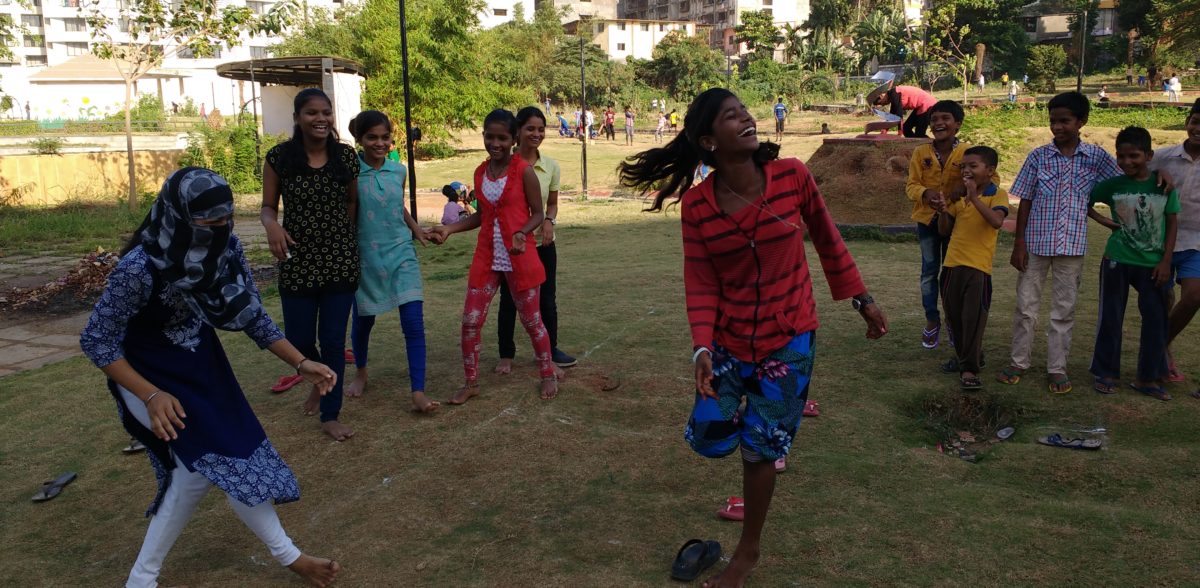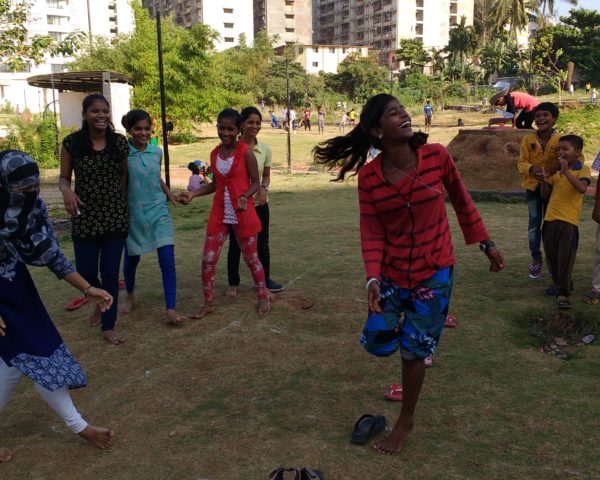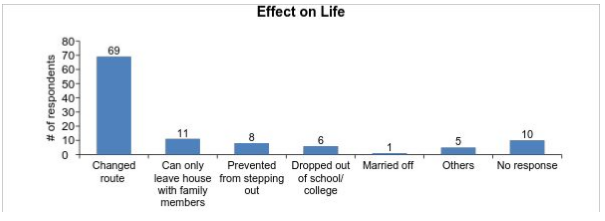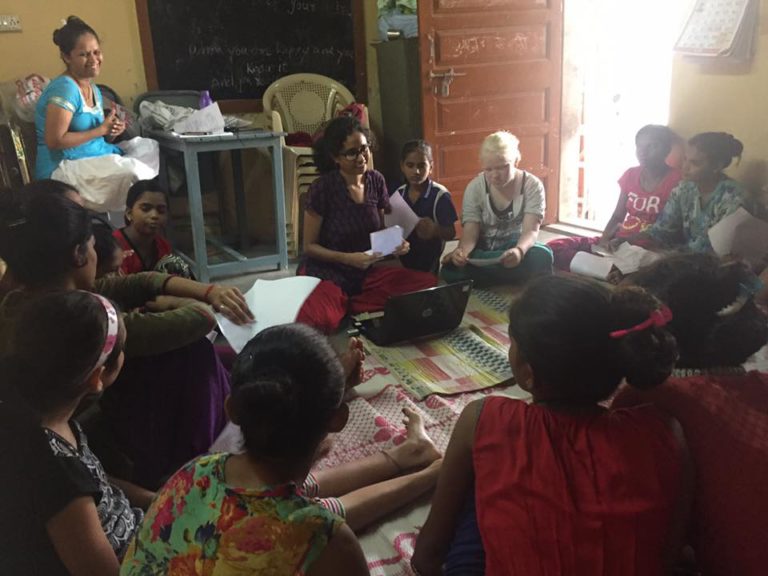Social Barriers to Education

Anu Salelkar is a Program and Outreach Officer with Safecity based in Mumbai and responsible for on the ground work in Mumbai, Pune and Goa. She has an M. Phil degree in Women’s studies from Tata Institute of Social Sciences, and a Masters in Sociology from the Central University of Hyderabad. Her past work has focused on the issues of adolescent girls, and her thesis looked at girls’ experiences of sexual violence at schools. She sees herself as a sex positive intersectional feminist and tries to get her work to reflect the same.
Social Barriers to Education
A survey was carried out while conducting a campaign in Indira Nagar, Jogeshwari East, Mumbai with Partner NGO, Vacha. On discussing this survey carried out on the young women in the community, we began to see a particular trend emerging- many of the incidents of harassment were being reported around schools and colleges. While analysing this information further, the core committee of the campaign consisting of the adolescent girls of the community itself elaborated on the large number of girls being routinely harassed on route to their educational institution, whether it be schools, colleges or even tuition classes.
Though this may seem an example of just a handful of girls from one community the survey provided shocking data which showed the larger picture. In the survey done in the same community, ninety-six out of a hundred girls said they had experienced some form of harassment. In the same survey, when asked about the implications of their experience, 69% said they had to change their regular route. For these girls, sexual harassment or the fear of harassment has a direct impact on their access to public space and in a larger context, their access to opportunities. In a society where women and girls have to constantly fight and negotiate to be able to get out of the house sexual harassment is a very real obstacle they have to face on a regular basis.
Through these campaigns we’ve also come across instances of girls dropping out of schools and colleges. Many girls also are told to opt for a distance education course so as to minimize the threat of violence, with the naive belief that if a girl remains at home she is safe. Not only is that often untrue but it also robs them of the experience of going to college and getting the exposure necessary for their development.“Bahar ka mahaul bohot kharab hai” (The situation outside is not safe) is a phrase we have heard one too many times in the field as a justification for preventing their girls access not only to places of traditional education, such as schools and colleges, but also other public spaces such as gardens, markets, street corners and so on.

When we took the girls to the garden to play kho kho
The data from the survey helped us understand the many effects of sexual harassment on the education of the girls and women. Firstly, it becomes clear that we cannot separate the right to access public spaces from the right to education. Sexual harassment faced by girls in the form of catcalling, staring, stalking and so on, creates unsafe atmospheres around schools and other educational institutions. Furthermore, victim-blaming is prominent which means that many girls are blamed for the harassment they face through counter-questions about their clothing, behavior and so on. On the rare occasions when girls did speak out about harassment it resulted in increased restrictions from their family. This was a fact almost all girls in the campaign spoke about whilst discussing reasons for keeping silent about instances of sexual harassment. Girls often suffer in silence to protect the opportunity of further education.
Secondly, education is not limited to institutions like schools and colleges. A full rounded education includes exposure to different experiences which many girls are denied due to various restrictions placed on them for their own security. Over the discussion of the data, we realized that another reason why only areas around schools and colleges were showing as hotspots where girls faced harassment was due to the fact that girls don’t really access public spaces other than these. Girls aren’t seen at street corners, gardens, open spaces or any other public space where they can hang out, meet and share experiences. They are prevented from accessing knowledge generated from these public spaces.

Though a majority of girls do not drop out of schools due to harassment (in our survey, 6% girls were made to drop out of educational institutes), it does affect the way they access public spaces which do include schools and colleges. When speaking of sexual harassment and education, we must look beyond the physical spaces of these institutions. By limiting the definition of education to formal educational institutions, we also limit our understanding of how sexual harassment affects girls and how we can design interventions to change this situation so that girls can achieve equal education opportunities.



